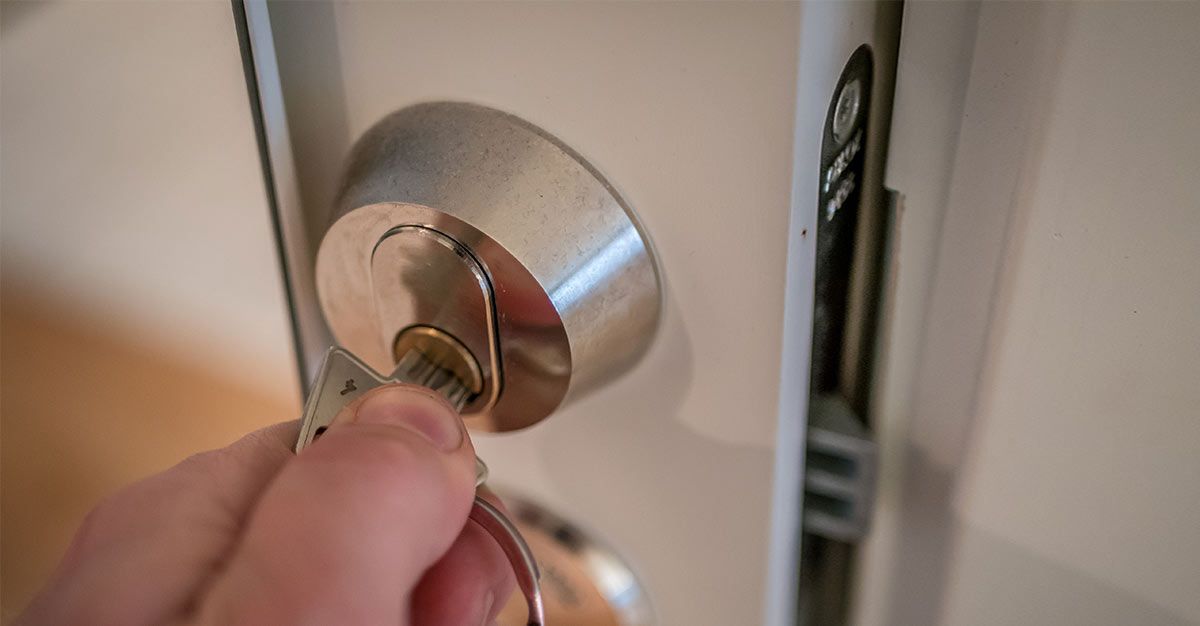Hur länge motstår dörren inbrottsförsök?
RC1, eller den mer använda benämningen säkerhetsdörrar RC1, är en skyddsklass för säkerhetsdörrar som definieras enligt den europeiska standarden EN 1627. Det är den lägsta skyddsklassen och avser dörrar som ger ett grundläggande inbrottsskydd.
Denna dörr måste klara av ett standardiserat inbrottsförsök som utförs av en auktoriserad testorganisation. Under testet försöker man öppna dörren utan verktyg genom att exempelvis sparka, riva, bända. Dörren måste motstå detta försök under minst 3 minuter för att därmed uppfylla RC1-kraven.
Var är dörren testad?
RC1-dörrar testas vanligtvis i laboratorier och utförs av auktoriserade testorganisationer som specialiserar sig på just på säkerhetstester. Testerna ska utföras enligt den europeiska standarden EN 1627 som specificerar de verktyg och metoder som ska användas vid testning.
Var förekommer de dörrar som har benämningen ”Säkerhetsdörrar RC1”?
De förekommer i allt ifrån bostadsbyggnader och kontor till andra offentliga byggnader där grundläggande säkerhet krävs. De kan användas till utrymmen med lägre säkerhetsrisk som förråd, soprum eller förvaringsrum. RC1-klassning är också en av de vanligaste förkommande klassningarna för lägenhetsdörrar i Sverige.
Vad är dörren tillverkad av?
RC1-dörrar är vanligtvis tillverkade av robusta material som trä, stål eller aluminium och är utrustade med högkvalitativa låsenheter. De kan också utrustas med extra funktioner som till exempel dörrstopp, dörrstängare och dörrspioner för ökad funktion.
Installation av dörr
Det är viktigt att se till att installationen av dörren görs av en kvalificerad montör. Felaktig installation kan leda till att dörren inte fungerar som den ska, och det ökar också risken för säkerhetsbrister.
Andra fördelar
Utöver inbrottsskydd kan RC1-dörrar även ge andra fördelar som ljudisolering och värmeskydd. De kan genom en tätslutande konstruktion bidra till att minska ljudnivåerna och bibehålla en jämn temperatur i rummet, vilket kan leda till minskade energikostnader.
Vilka olika dörrtyper finns det?
Det finns flera olika designtyper av RC1-dörrar som kan anpassas efter byggnadens arkitektur, säkerhetskrav och personliga preferenser. Här är några vanliga designtyper:
-
Slät dörr
Den mest grundläggande designen av en RC1-dörr. Denna typ av dörr har en enkel utformning utan några extra utsmyckningar eller paneler. Passar bra i moderna byggnader med ett minimalistiskt utseende.
-
Paneldörr
En traditionell och klassisk design som består av flera paneler och ger dörren en strukturerad och utsmyckad look. Paneldörrar kan anpassas efter olika stilar och utföranden, såsom raka eller krökta paneler.
-
Glasdörr
Glasdörrar kan tillverkas med olika typer av glas, inklusive klarglas, frostat glas eller säkerhetsglas.
-
Branddörr
Dessa dörrar är utformade för att förhindra spridning av brand och kan vara tillverkade i olika material och designer.
-
Skjutdörr
Skjutdörrar är en vanlig typ av dörrar i offentliga byggnader, som hotell eller kontor. Dessa dörrar rör sig horisontellt vid öppning och stängning, och kan också anpassas efter olika storlekar.
Vilka material är ”Säkerhetsdörrar RC1” tillverkade i?
Valet av material kan påverka dörrarnas säkerhet, isolering, hållbarhet och utseende. Här är några vanliga material:
-
Stål
Ett av de vanligaste materialen som används för att tillverka RC1-dörrar är stål. Det är mycket hållbart och motståndskraftigt mot inbrottsförsök. Ståldörrar kan ha olika ytbehandlingar, såsom pulverlackering, för att öka korrosionsbeständighet och utseende.
-
Trä
Trä ger dörrarna en varm och naturlig känsla och kan anpassas efter olika stilar och färger. Trädörrar kan behandlas med olika lacker eller färger för att förbättra deras utseende och skydda dem mot fukt och insekter.
-
Aluminium
Ett lätt och starkt material som också kan användas för att tillverka RC1-dörrar och som dessutom har utmärkt korrosionsbeständighet. Kan anpassas i olika finisher för att passa byggnadens utseende.
-
Glas
Glasdörrar är annan vanlig typ av RC1-dörrar. De ger en elegant känsla och kan tillverkas med olika typer av glas, som klarglas, frostat glas eller säkerhetsglas. Dessa dörrar kan även kombineras med andra material, som stål eller aluminium, för att ge ökad säkerhet och isolering.
En sammanfattning
Sammanfattningsvis är dörrar enligt benämningen Säkerhetsdörrar RC1 en bra lösning för att ge ett grundläggande skydd mot inbrott i bostäder och byggnader. De kan också bidra till att minska ljudnivåer och spara energikostnader. Men om högre säkerhet krävs bör man överväga att installera en dörr med högre skyddsklass och addera ytterligare säkerhetsåtgärder som till exempel övervakningssystem eller larmsystem.
FAQ
Är en RC1-dörr brandsäker?
En RC1-dörr ger endast skydd mot inbrott och är inte speciellt brandsäker. Om brandskydd är en viktig faktor, bör man välja en dörr som är testad och certifierad för brandskydd. Läs mer om brandskydd.
Kan en RC1-dörr vara anpassad för personer med funktionsnedsättning?
Ja, till exempel genom en ökad bredd som tillåter rullstolar eller genom att ha ett automatiskt öppningssystem som kan styras med en fjärrkontroll eller tryckknapp.
Kan en RC1-dörr ha en energieffektiv konstruktion?
Ja, genom att ha en välisolerad kärna eller genom ett isolerat glasparti. Detta kan hjälpa till att minska energiförlusten och öka byggnadens energieffektivitet.
Kan en RC1-dörr anpassas för att passa olika typer av byggnadsstilar?
Ja, genom urvalet av olika typer av design- och materialalternativ. Till exempel kan en trädörr passa bra i en traditionell byggnadsstil, medan en glasdörr kanske passar bättre i en mer modern byggnadsstil. En stål- eller aluminiumdörr passar ofta bra till exempelvis trapphus, källare och förråd.
Kan en RC1-dörr ha en integrerad säkerhetskamera eller säkerhetsbelysning?
Ja, den kan ha en integrerad säkerhetsutrustning och belysning för att addera till byggnadens säkerhet.





